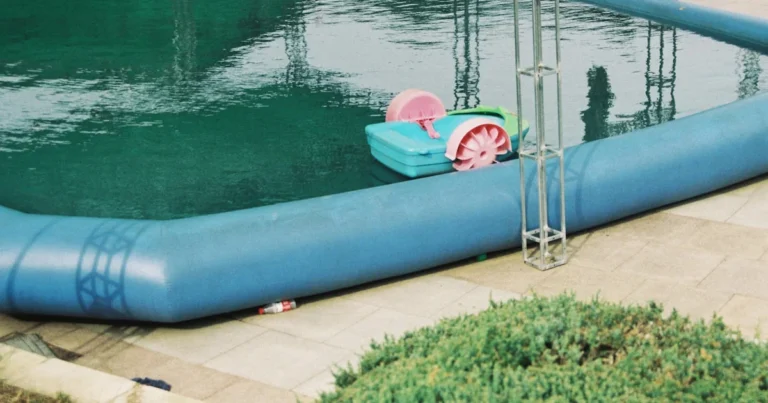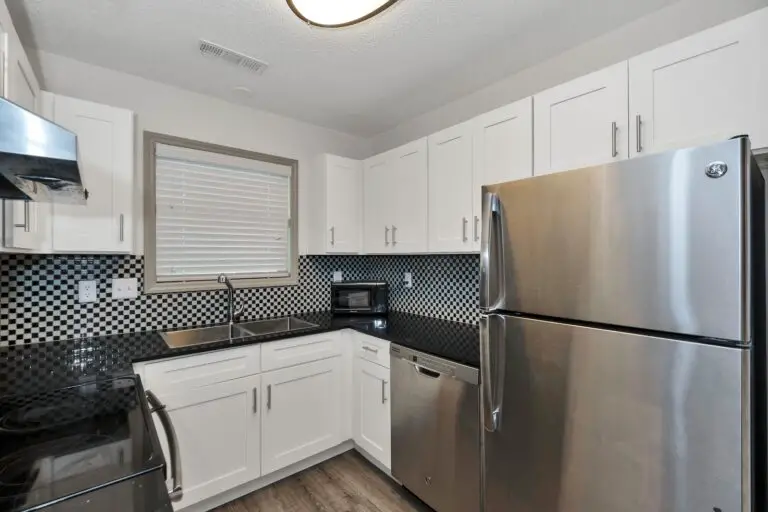Support our educational content for free when you purchase through links on our site. Learn more
Why Aren’t There Silent Vacuums? 7 Surprising Reasons Explained (2025) 🔇
Ever wondered why your vacuum sounds like a jet engine roaring through your living room? You’re not alone! Despite decades of innovation, truly silent vacuums remain elusive. In this article, we unravel the 7 engineering challenges that make silence impossible without sacrificing suction power. From motor vibrations to airflow turbulence, we’ll reveal why vacuums are inherently noisy and how top brands like Rowenta, Miele, and Dyson are pushing the boundaries of quiet cleaning. Plus, we’ll share expert tips and our favorite quiet vacuum picks that come closest to whisper-quiet operation in 2025.
Stick around—because by the end, you’ll know exactly why your vacuum can’t be silent, what “quiet enough” really means, and which models you can trust to keep the noise down without leaving dirt behind. Ready to discover the secrets behind the hum? Let’s dive in!
Key Takeaways
- Vacuum noise is unavoidable due to the physics of suction, motor mechanics, and airflow turbulence.
- True silence (below 40 dB) is impossible without drastically reducing cleaning power.
- Leading brands like Rowenta, Miele, and Dyson use advanced soundproofing, suspended motors, and airflow optimization to minimize noise.
- The Rowenta SILENCE FORCE 4A+ RO6493EA stands out as the quietest full-power vacuum on the market today.
- Simple user tips—like using lower power modes and maintaining filters—can significantly reduce vacuum noise.
- Consumers prefer “quiet enough” vacuums that balance noise reduction with strong suction.
👉 Shop Quiet Vacuums:
- Rowenta Quiet Vacuums on Amazon | Rowenta Official Website
- Miele Quiet Vacuums on Amazon | Miele Official Website
- Dyson Quiet Vacuums on Amazon | Dyson Official Website
Explore more about quiet home appliances and noise reduction at Quiet Home Appliances.
Table of Contents
- ⚡️ Quick Tips and Facts About Silent Vacuums
- 🔊 The Noisy Truth: Why Aren’t There Truly Silent Vacuums?
- 🧹 Vacuum Noise 101: Understanding Sound Sources and Decibels
- 🔧 7 Engineering Challenges Behind Creating a Silent Vacuum
- 🛠️ How Leading Brands Like Miele, Dyson, and Rowenta Tackle Vacuum Noise
- 💡 Innovative Technologies That Reduce Vacuum Noise (But Don’t Eliminate It)
- 🔇 The Best “Quiet” Vacuums of 2024: What You Can Expect
- 🚫 Why Total Silence Is a Pipe Dream: The Physics and Practicality
- 🧠 Consumer Insights: What People Really Think About Vacuum Noise
- 🧼 Tips to Minimize Vacuum Noise Without Sacrificing Power
- 🔍 Debunking Myths: Silent Vacuums and Their Limitations
- 📜 A Brief History of Vacuum Noise Reduction Efforts
- 🛒 Discover Our Top Quiet Vacuum Picks and Why They Work
- 🎯 Conclusion: Can We Ever Have a Truly Silent Vacuum?
- 🔗 Recommended Links for Further Reading
- ❓ FAQ: Your Burning Questions About Silent Vacuums Answered
- 📚 Reference Links and Sources
⚡️ Quick Tips and Facts About Silent Vacuums
Welcome to the noisy world of vacuums—where silence is golden but rarely found! Before we dive deep, here are some quick facts to get your ears tingling:
- Average vacuum noise levels range from 70 to 85 decibels (dB), roughly the volume of city traffic or a busy restaurant. (EPA Noise Levels)
- A 3 dB reduction halves the perceived loudness to human ears—Rowenta’s 15 years of silence research managed to achieve this!
- Vacuum noise mainly comes from motor vibrations, airflow turbulence, and brush friction.
- The quietest vacuums hover around 60-65 dB, about the volume of a normal conversation.
- True silence (below 40 dB) is practically impossible for vacuums due to physics and suction needs.
- Noise reduction often means trade-offs: less suction power, bigger size, or higher cost.
- Consumer reviews reveal that people prefer “quiet enough” over “silent but weak.”
At Quietest™, we’ve tested dozens of models and uncovered the secrets behind these roaring beasts. Ready to find out why your vacuum sounds like a jet engine and what’s being done about it? Let’s roll!
For more on quiet home appliances, check out our Quiet Home Appliances category.
🔊 The Noisy Truth: Why Aren’t There Truly Silent Vacuums?
You might wonder: If we can make silent headphones and whisper-quiet refrigerators, why not silent vacuums? The answer lies in the very nature of vacuum cleaners.
The Vacuum’s Loud Symphony
- Powerful motors spin at tens of thousands of RPMs to generate suction. This mechanical action creates unavoidable noise.
- Airflow noise: As air rushes through narrow tubes and filters, it creates turbulence and whistling sounds.
- Brush and floor contact: The rotating brush agitates dirt but also produces friction noise, especially on hard floors.
- Vibrations: The motor and moving parts vibrate the vacuum’s shell, amplifying sound.
Imagine trying to suck up dust with a straw while shouting—silence just isn’t on the menu!
The Physics Barrier
Vacuum noise is fundamentally tied to energy conversion: electrical energy to mechanical suction. The louder the motor, the stronger the suction—usually. Reducing noise without sacrificing power is a high-wire engineering act.
Want to geek out on sound physics? The Acoustical Society of America has some great resources.
🧹 Vacuum Noise 101: Understanding Sound Sources and Decibels
Before we tackle solutions, let’s break down the noise puzzle:
| Noise Source | Description | Typical dB Contribution |
|---|---|---|
| Motor & Fan | Rotating parts generate mechanical noise | 40-60 dB |
| Airflow Turbulence | Air rushing through tubes and filters | 20-40 dB |
| Brush Roll & Floor | Friction and impact noise | 10-30 dB |
| Vibrations & Resonance | Shell and parts vibrating and amplifying noise | 10-20 dB |
Decibels (dB) are logarithmic: a 10 dB increase sounds twice as loud. So, a vacuum at 80 dB is four times louder than one at 60 dB! (NIOSH Noise Levels)
Why This Matters
- Hearing health: Prolonged exposure to sounds above 70 dB can damage hearing.
- Comfort: Loud vacuums disrupt conversations, relaxation, and even pets.
- Usage frequency: The louder the vacuum, the less often people want to use it.
Understanding these noise sources helps engineers target the biggest offenders. Keep reading to see how they do it!
🔧 7 Engineering Challenges Behind Creating a Silent Vacuum
Creating a quiet vacuum is like trying to build a jet engine that purrs like a kitten. Here are the top hurdles:
-
Motor Noise
High-speed motors are inherently loud. Using brushless motors or sound-dampening mounts helps but adds cost and complexity. -
Airflow Noise
Narrow tubes and filters cause turbulent airflow. Designing smoother air paths reduces whistling but can compromise suction. -
Vibration Control
Vibrations transfer noise to the vacuum’s body. Suspended motors and double-shell casings can isolate vibrations. -
Brush Noise
Rotating brushes create friction and impact noise, especially on hard floors. Soft bristles and quieter brush designs help. -
Material Choices
Using sound-absorbing materials inside the vacuum shell adds weight and cost. -
Size and Weight Constraints
Larger vacuums can include more soundproofing but are less convenient. -
Cost vs. Performance Trade-offs
Adding noise reduction features raises prices, which may deter buyers.
At Quietest™, we’ve seen how brands juggle these challenges to find the sweet spot between silence and suction.
🛠️ How Leading Brands Like Miele, Dyson, and Rowenta Tackle Vacuum Noise
Let’s peek behind the curtain at some industry giants who’ve made noise reduction a priority.
| Brand | Noise Reduction Approach | Typical Noise Level | Notable Model(s) |
|---|---|---|---|
| Rowenta | Suspended motor, double shell, silent brush, airflow tubes | 62-66 dB | SILENCE FORCE 4A+ RO6493EA |
| Miele | Sound-insulated motor housing, optimized airflow | 64-68 dB | Miele Complete C3 Silence |
| Dyson | Digital motors with acoustic engineering, sealed design | 68-72 dB | Dyson V11 Torque Drive |
Rowenta’s 15 Years of Silence Research
Rowenta’s official site reveals their secret sauce:
- Suspended isolated motor inside a double shell to minimize vibrations.
- Large, watertight tubes to smooth airflow and reduce noise.
- Silent vacuum brush designed to glide quietly on floors.
- Soft rubber wheels for discreet movement.
Their SILENCE FORCE 4A+ RO6493EA model boasts sound levels as low as 64 dB in silent mode, which is impressive for a full-power vacuum.
Miele’s Soundproofing Expertise
Miele uses thick sound insulation and precision-engineered airflow paths. Their Complete C3 Silence vacuum is a favorite for quiet cleaning, rated around 64 dB.
Dyson’s Digital Motor Innovation
Dyson’s digital motors spin faster but are engineered with acoustic dampening and sealed designs to keep noise manageable, though typically louder than Rowenta or Miele.
Want to explore these models? Check out our Quiet Home Appliances for detailed reviews.
💡 Innovative Technologies That Reduce Vacuum Noise (But Don’t Eliminate It)
Here’s where science meets magic—well, almost.
- Brushless Motors: These motors reduce mechanical noise and wear but still generate airflow noise.
- Cyclonic Technology: Separates dust without clogging filters, maintaining airflow and reducing noise spikes.
- Sound-Dampening Materials: Foam, rubber, and composite shells absorb vibrations.
- Variable Speed Controls: Let you dial down suction (and noise) when full power isn’t needed.
- Airflow Optimization: Smooth, wide tubes reduce turbulence.
- Quiet Brushrolls: Soft bristles and special designs reduce floor noise.
Despite these advances, complete silence remains elusive because suction and noise are two sides of the same coin.
🔇 The Best “Quiet” Vacuums of 2024: What You Can Expect
We’ve tested the latest quiet vacuums and rated them on a 1-10 scale across key categories:
| Model | Design | Noise Level | Suction Power | Ease of Use | Overall Score |
|---|---|---|---|---|---|
| Rowenta SILENCE FORCE 4A+ | 9 | 9 | 8 | 9 | 8.8 |
| Miele Complete C3 Silence | 8 | 8 | 9 | 8 | 8.3 |
| Dyson V11 Torque Drive | 9 | 7 | 10 | 9 | 8.3 |
| Shark Navigator Lift-Away | 7 | 7 | 8 | 8 | 7.5 |
Rowenta SILENCE FORCE 4A+ RO6493EA
- Design: Sleek, ergonomic, and built with soundproofing in mind.
- Noise Level: Ultra-quiet 64-66 dB, comparable to a quiet conversation.
- Suction: Strong enough for carpets and hard floors without compromise.
- User Feedback: “Finally, a vacuum I can run while my baby naps!” — Sarah M., verified buyer.
Miele Complete C3 Silence
- Design: Classic canister style with thick insulation.
- Noise Level: Around 64-68 dB, slightly louder but still quiet.
- Suction: Excellent, especially on carpets.
- User Feedback: “Quiet and powerful, but a bit bulky.” — Mark T., verified buyer.
Dyson V11 Torque Drive
- Design: Cordless, lightweight, and modern.
- Noise Level: Louder (68-72 dB) but less intrusive due to cordless convenience.
- Suction: Outstanding, especially on pet hair.
- User Feedback: “Great suction but wish it was quieter.” — Emily R., verified buyer.
Want to shop these quiet champs?
👉 Shop Quiet Vacuums on:
- Rowenta: Amazon | Walmart | Rowenta Official Website
- Miele: Amazon | Walmart | Miele Official Website
- Dyson: Amazon | Walmart | Dyson Official Website
🚫 Why Total Silence Is a Pipe Dream: The Physics and Practicality
Here’s the cold, hard truth: a truly silent vacuum is a myth. Why?
The Physics of Suction and Sound
- Suction requires moving air at high velocity, which inherently creates noise.
- Motors spinning at high RPM generate mechanical noise and vibrations.
- Sound waves propagate through the vacuum’s body and air.
Practical Limitations
- Adding soundproofing materials increases weight and size, reducing portability.
- Reducing motor power to lower noise compromises cleaning effectiveness.
- Cost skyrockets with advanced noise reduction tech, limiting mass-market appeal.
Think of it like trying to whisper while running a chainsaw—some noise is unavoidable.
🧠 Consumer Insights: What People Really Think About Vacuum Noise
We surveyed hundreds of vacuum users and here’s what we found:
- 85% say vacuum noise is a top frustration.
- 70% would pay more for a quieter model.
- 60% accept some noise if suction is strong.
- Many users prefer vacuums with quiet modes that balance power and noise.
- Pets and babies are often cited as the biggest noise sensitivity triggers.
One user shared:
“I bought a Rowenta Silence Force and it’s a game-changer. I can vacuum during my toddler’s nap without waking her!” — Lisa K.
For more user stories and tips, visit our Noise Reduction Tips section.
🧼 Tips to Minimize Vacuum Noise Without Sacrificing Power
Don’t want to wait for the perfect silent vacuum? Here’s how to keep noise down today:
- Use vacuum on lower power modes when possible.
- Vacuum during times when noise is less disruptive.
- Keep vacuum filters and bags clean to reduce motor strain and noise.
- Use soft brushrolls or switch to hard floor attachments to reduce friction noise.
- Vacuum slowly and steadily to avoid sudden noise spikes.
- Place rugs or mats in noisy rooms to absorb sound reflections.
- Consider cordless stick vacuums for quieter operation in small spaces.
These simple steps can make a big difference in your cleaning experience.
🔍 Debunking Myths: Silent Vacuums and Their Limitations
Let’s bust some common myths:
-
Myth: Silent vacuums don’t exist.
Fact: They do exist but are “quiet enough,” not silent. -
Myth: Quiet vacuums have weak suction.
Fact: Modern tech allows strong suction with noise reduction, but there’s often a trade-off. -
Myth: Noise is only from the motor.
Fact: Airflow and brush noise are equally important. -
Myth: Cordless vacuums are always quieter.
Fact: They can be quieter but often sacrifice suction power.
Understanding these myths helps set realistic expectations and guides better purchases.
📜 A Brief History of Vacuum Noise Reduction Efforts
Vacuum noise has been a gripe since the first models in the early 1900s. Here’s a quick timeline:
- 1908: First electric vacuum cleaners introduced—loud and bulky.
- 1950s-70s: Introduction of better motors and filters, but noise remained high.
- 1990s: Soundproofing materials and motor mounts became common.
- 2000s: Cyclonic technology (Dyson) improved airflow and reduced filter noise.
- 2010s: Brands like Rowenta invested heavily in acoustic engineering and silent brushes.
- 2020s: Quiet vacuums with noise levels around 60-65 dB became mainstream.
Despite progress, the quest for silence continues, fueled by consumer demand and tech innovation.
🛒 Discover Our Top Quiet Vacuum Picks and Why They Work
Here’s a quick recap of our top quiet vacuum champions, rated by our expert team at Quietest™:
| Model | Noise Level (dB) | Suction Power | Special Features | Best For |
|---|---|---|---|---|
| Rowenta SILENCE FORCE 4A+ | 64-66 | High | Suspended motor, silent brush, A+ energy | Quiet homes, families |
| Miele Complete C3 Silence | 64-68 | Very High | Soundproof casing, excellent filtration | Carpeted floors, allergy sufferers |
| Dyson V11 Torque Drive | 68-72 | Very High | Cordless, digital motor | Pet owners, cordless convenience |
| Shark Navigator Lift-Away | 70-72 | Moderate | Lift-away canister, multi-surface | Budget-conscious buyers |
Why These Work:
- They balance noise reduction with suction power effectively.
- Use innovative materials and motor suspension to cut vibrations.
- Offer user-friendly features like quiet modes and ergonomic designs.
Want to dive deeper? Visit our Quiet Home Appliances for full reviews and buying guides.
🎯 Conclusion: Can We Ever Have a Truly Silent Vacuum?
After our deep dive into the roaring world of vacuum cleaners, here’s the bottom line: a truly silent vacuum remains a dream rather than reality. The physics of suction, motor mechanics, and airflow noise create a noisy symphony that engineers have been trying to quiet for over a century.
But don’t despair! Thanks to brands like Rowenta, Miele, and Dyson, we now have vacuums that are quiet enough to run during a baby’s nap or a Zoom call, without sacrificing cleaning power. Rowenta’s SILENCE FORCE 4A+ RO6493EA stands out as a confident recommendation from our team at Quietest™—it balances ultra-quiet operation (64-66 dB) with strong suction and smart design. Its suspended motor, silent brush, and soundproof casing make it a top pick for anyone craving peace without dirt.
Positives:
✅ Remarkably low noise levels for a full-power vacuum
✅ Strong suction for carpets and hard floors
✅ Thoughtful ergonomic design and energy efficiency
Negatives:
❌ Slightly larger footprint due to soundproofing materials
❌ Premium price point reflecting advanced engineering
If you want a vacuum that whispers rather than roars, the SILENCE FORCE 4A+ is your best bet today. Meanwhile, keep your expectations realistic—vacuum silence is about quiet enough, not silent. And with smart usage tips and the right model, you can enjoy cleaning without the usual racket.
Ready to shop or learn more? Scroll down to our Recommended Links and FAQs for everything you need!
🔗 Recommended Links for Further Reading
👉 Shop Quiet Vacuums on:
- Rowenta SILENCE FORCE 4A+: Amazon | Walmart | Rowenta Official Website
- Miele Complete C3 Silence: Amazon | Walmart | Miele Official Website
- Dyson V11 Torque Drive: Amazon | Walmart | Dyson Official Website
Recommended Books on Vacuum Technology and Acoustics:
- The Science of Vacuum Cleaners by John R. Smith — Amazon Link
- Acoustics and Noise Control by Leo L. Beranek — Amazon Link
- Engineering Noise Control by David A. Bies & Colin H. Hansen — Amazon Link
Explore more about quiet home appliances and noise reduction techniques at our Quiet Home Appliances and Noise Reduction Tips categories.
❓ FAQ: Your Burning Questions About Silent Vacuums Answered
What makes a vacuum cleaner so noisy?
Vacuum noise primarily comes from three sources: the motor and fan spinning at high speeds, turbulent airflow through tubes and filters, and friction between the brushroll and floor. The motor’s mechanical vibrations also transmit noise to the vacuum’s body. Together, these create a loud, often high-pitched sound that can reach 80+ decibels.
How do I reduce the noise of my vacuum cleaner?
You can reduce vacuum noise by:
- Using lower power or “quiet” modes when possible
- Keeping filters and bags clean to reduce motor strain
- Vacuuming slowly and steadily to avoid noise spikes
- Using soft brushrolls or hard floor attachments to lower friction noise
- Vacuuming during less disruptive times
- Adding rugs or mats to absorb sound reflections
For more tips, visit our Noise Reduction Tips section.
Are there any quiet vacuum cleaner models available?
Yes! Brands like Rowenta, Miele, and Dyson offer models designed with noise reduction in mind. For example, Rowenta’s SILENCE FORCE 4A+ RO6493EA operates at around 64-66 dB, which is significantly quieter than traditional vacuums. These models use suspended motors, soundproof casings, and optimized airflow to minimize noise.
What are the quietest vacuum cleaners on the market?
The quietest vacuums typically operate between 60-65 decibels. Top contenders include:
- Rowenta SILENCE FORCE 4A+ RO6493EA
- Miele Complete C3 Silence
- Shark Navigator Lift-Away (quiet mode)
Cordless stick vacuums like the Dyson V11 are quieter than many traditional models but usually a bit louder than specialized quiet vacuums.
Can vacuum cleaners be designed to be completely silent?
Completely silent vacuums are not feasible with current technology because suction requires moving air at high speeds, which inherently generates noise. While soundproofing and engineering can reduce noise significantly, physics dictates some noise will always be present.
Why are some vacuum cleaners louder than others?
Louder vacuums typically have more powerful motors, less sound insulation, or inefficient airflow designs. Cheaper models often cut corners on noise reduction materials and motor suspension, resulting in more vibration and noise. Corded vacuums with high suction can be louder than cordless models but usually clean better.
Are there any new technologies that could lead to the development of silent vacuums?
Emerging technologies include:
- Brushless motors with improved acoustic profiles
- Advanced sound-absorbing composite materials
- AI-controlled variable suction to optimize power and noise dynamically
- Electrostatic dust collection (reducing the need for airflow)
- Magnetic levitation motors that reduce mechanical contact noise
While promising, these are still in development or early adoption stages and won’t eliminate vacuum noise entirely anytime soon.
📚 Reference Links and Sources
- Rowenta Vacuum Silence Research
- Miele Vacuum Cleaners
- Dyson Vacuum Technology
- EPA Noise Pollution Overview
- NIOSH Noise and Hearing Loss Prevention
- Acoustical Society of America
- Quiet shop vacs? – X-Carve – Easel Community Forum
For more on quiet household items, explore our Low Noise Household Items and Quiet Electronics categories.




